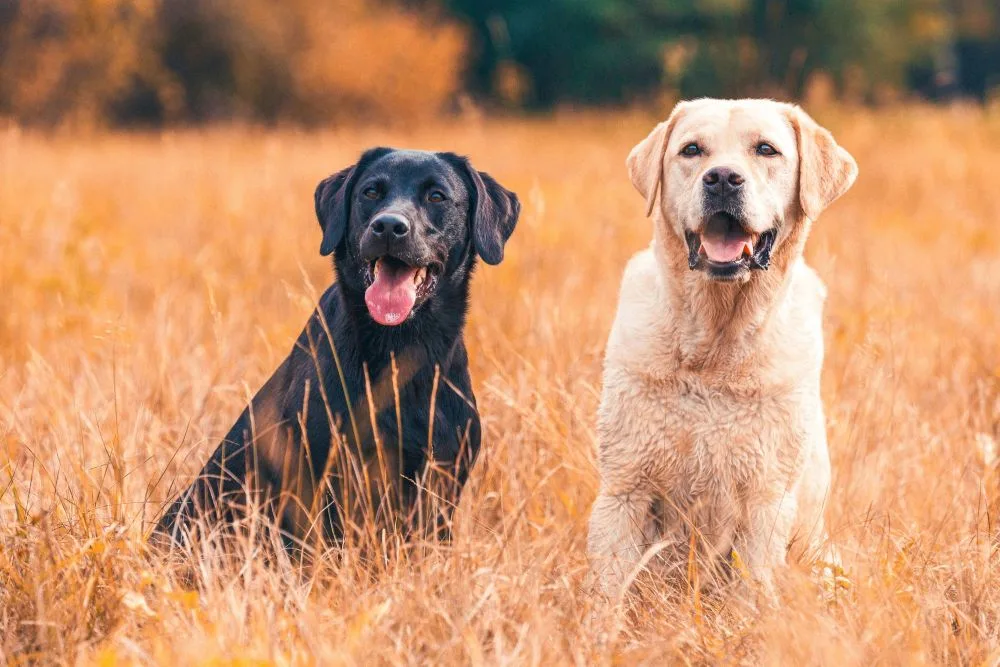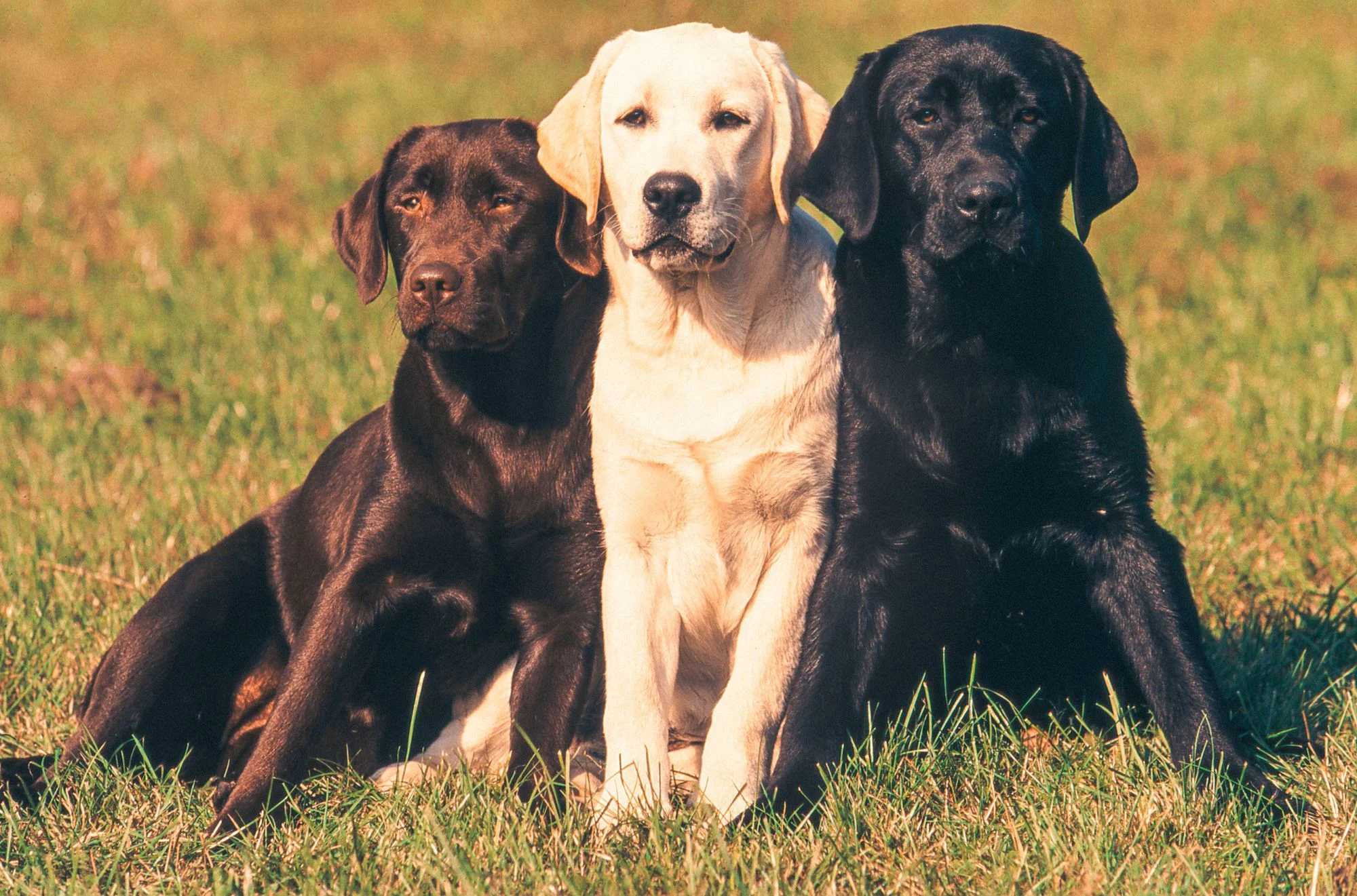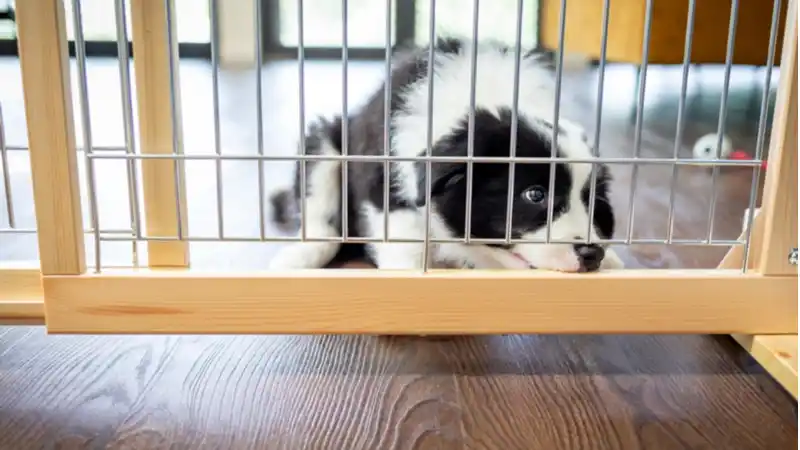A Fan-Favorite Breed: The Labrador Retriever
From humble origins on fishing boats to one of the most popular breeds in America for decades, this smart and loving breed has a robust history of caring for humans.

It is hard to think of a more classic family dog than the loyal Labrador Retriever. This popular breed is known for excelling in sports, hunting, service, and being great family pets. Although Labrador, Canada is where you may guess this breed originates – you would be wrong! The breed began their rise to worldwide popularity in Newfoundland, where they were first known as St. John's Water Dog.
How the Labrador Retriever Came to Be
A stocky, double coated dog, these hardy canines were custom tailored for a world of cold water and hard work in the chilly lands of Newfoundland, Canada. Nowadays you will often find them retrieving ducks or other game with their hunting owners, however they were intended to be a fisherman’s best friend first and foremost. Waterproof coats, webbed paws, and a sturdy but gentle mouth made them indispensable companions that could assist in and out of the water with nets and ropes. Originally, this dog was known as the St. John’s Water Dog, an apt description of this strong swimmer.
Extinction is the furthest thing from one’s mind when thinking of the Labrador Retriever, but these now commonplace dogs almost faded into history in the late 1800’s. Newfoundland began to institute a strict tax on dog ownership, driving most families to give up their canine companions because it became too expensive to own them.
Fortunately for us all, breeders in England had already begun to appreciate the versatility and working ethic of the breed they carried back home. They began to use them for hunting, rather than fishing, and added in a few local breeds. They termed these canines “Labrador dogs”. No one is quite sure why Labrador got the credit for these dogs instead of Newfoundland, but their popularity quickly spread. Now, over 100 years later, this breed is consistently in the top 3 most popular breeds in America.
The Labrador Retriever as Working Dogs
Labs are more than capable of titling in multiple venues, from conformation to hunting and more, as well as excelling in therapy work and sports. They are also very popular as service dogs – work that requires a dog that is smart, steady, and eager to please, making labs an ideal candidate for this task. Their sturdy bodies and gentle mouths, as well as intelligence, make Labradors able to perform a wide variety of tasks to assist their humans
The Labrador’s retrieving instincts and love of water translate well into sports such as dock diving too. Versatile is one word that describes the Labrador Retriever to a T. Nothing makes them happier than helping their humans and using their brains to solve problems. Although this trait means they can easily adapt to many households, the intelligence and drive of the breed can also lead to undesirable behaviors. Lifelong training, as well as mental stimulation and exercise, is essential to provide your Lab with a happy and fulfilled life. Boredom can lead to behaviors like excessive barking, digging, chewing, and other undesirable traits. Getting involved with local trainers, facilities, and dog sports will help you and your dog’s relationship grow and give them the outlet they need to work those brains!
The Labrador Retriever’s Appearance

As stated in the breed standard, the most distinguishing characteristics of the Labrador Retriever are its short, dense, weather resistant coat; an "otter" tail; a clean-cut head with broad back skull and moderate stop; powerful jaws; and its "kind," friendly eyes, expressing character, intelligence, and good temperament.
The Labrador’s thick double coat can come in three colors – yellow, chocolate, and black. Shedding is a constant in any Labrador owner’s lives, courtesy of the fluffy undercoat that keeps these dogs warm in chilly climates. Waterproofing is provided by a coarse topcoat with natural oils. Double coated dogs need regular brushing and ideally should be blown out with a velocity dryer meant for dog grooming – this treatment ensures that the shedding undercoat does not become impacted or matted, which can cause a dog to overheat. Shaving should never be done to control shedding or heat regulation! Double coated dogs that are shaved simply shed smaller hairs, and now have no protective topcoat against the elements. There is also a risk that their coat will not come back fully! Cooling jackets, air-conditioned breaks, and swimming time are great ways to beat the heat without ruining the double coat of the Labrador.
The classic 3 colors of the Lab can appear in any litter, although with genetic understanding of the colors your breeding dogs carry you can get a good idea of what colors could appear in litters you produce. In recent years, the public has trended towards ‘unusual’ or ‘unique’ colors of classic dog breeds, which has led to the famed ‘silver lab’. However, according to the breed club and the breed standard, silver is not an accepted color and is not considered to be a purebred Labrador as the breed does not naturally carry the dilute gene.
Breeding Labrador Retrievers
When considering Labrador breeding, the parent club recommends that at minimum testing be conducted for hip and elbow dysplasia, healthy eyes, Exercise Induced Collapse, and Dilute genetics. Other optional tests include, but are not limited to, cardiac evaluation, Centronuclear Myopathy testing, and prcd-PRA testing. Health testing is an important part of ensuring this breed remains the strong, steady companion and hunting dog we all know and love. Many hereditary issues can be reduced, or avoided entirely, with proper health testing and care in a breeding program.
Breeding is not for the faint of heart! Before beginning a breeding program, it is important to be aware of all necessary preventative measures to avoid issues during pregnancy or whelping, as well as be prepared for the costs of regular check ups or medical care necessary to produce a healthy litter. Even the most prepared breeder can be faced with unexpected issues, such as emergency c sections, mastitis, and more! Explore our Breeding Coverage upgrade to protect your future dams against these potential emergencies.
If you are looking to get into a breed that is versatile, friendly, steady, and well known, the Labrador Retriever might be the one for you. Your family will fall in love with their fun personalities and active nature, and you will have a companion for life. Help make that life as healthy as possible by caring for your pet’s health and wellness with pet insurance.

Every Dog and Cat Deserves the Pet Insurance of Champions
Get prize-winning care for your pets.


